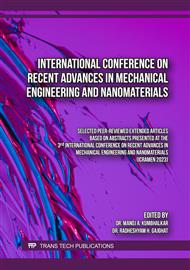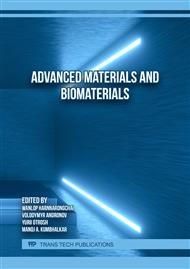[1]
Vasseur-Coronado, M.; Vlassi, A.; Boulois, H.D.d.; Schuhmacher, R.; Parich, A.; Pertot, I.; Puopolo, G. Ecological Role of Volatile Organic Compounds Emitted by Pantoeaagglomerans as Interspecies and Interkingdom Signals. Microorganisms 2021, 9, 1186. https://doi.org/10.3390/ microorganisms9061186
DOI: 10.3390/microorganisms9061186
Google Scholar
[2]
Aziz, M.; Nadipalli, R.K.; Xie, X.; Sun, Y.; Surowiec, K.; Zhang, J.L.; Paré, P.W. Augmenting sulfur metabolism and herbivore defense in Arabidopsis by bacterial volatile signaling. Front. Plant Sci. 2016, 27, 1–14.
DOI: 10.3389/fpls.2016.00458
Google Scholar
[3]
Meldau DG, Meldau S, Hoang LH, Underberg S, Wünsche H, Baldwin IT. Dimethyl disulfide produced by the naturally associated bacterium bacillus sp B55 promotes Nicotianaattenuata growth by enhancing sulfur nutrition. Plant Cell. 2013 Jul;25(7):2731-47. doi: 10.1105/tpc.113.114744. Epub 2013 Jul 31. PMID: 23903320; PMCID: PMC3753394.
DOI: 10.1105/tpc.113.114744
Google Scholar
[4]
H.A. Fel-Shafie, J.Rfalerio, semiochemicals and their potential use in pest management, chapter 1, biological control of pest and vector insects, intech open, dx.doi.org/
DOI: 10.5772/66463
Google Scholar
[5]
Novoselov, K.S.; Geim, A.K.; Morozov, S.V.; Jiang, D.; Zhang, Y.; Dubonos, S.V.; Grigorieva, I.V.; Firsov, A.A. Electric field effect in atomically thin carbon films. Science 2004, 306, 666–669.
DOI: 10.1126/science.1102896
Google Scholar
[6]
Nayak, L.; Rahaman, M.; Giri, R. Surface modification/functionalization of carbon materials by different techniques: An overview. In Carbon-Containing Polymer Composites; Springer Series on Polymer and Composite Materials; Rahaman, M., Khastgir, D., Aldalbahi, A., Eds.; Springer: Singapore, 2019; p.65–98.
DOI: 10.1007/978-981-13-2688-2_2
Google Scholar
[7]
Seitsonen A P, Saitta A M, Wassmann T, Lazzeri M, and Mauri F 2010 Structure and stability of graphene nanoribbons in oxygen, carbon dioxide, water, and ammonia Phys. Rev. B 82 115425.
DOI: 10.1103/PhysRevB.82.115425
Google Scholar
[8]
Ge H, Wang G, Liao Y 2014 Theoretical investigation on armchair graphene nanoribbons with oxygen-terminated edges, cond-mat.mtrl-sci, arXiv: 1411.1526v1.
Google Scholar
[9]
Novoselov K S, Geim A K, Morozov S V, Jiang D, Katsnelson M I, Grigorieva I V et all 2005 Two-dimensional gas of massless Dirac fermions in graphene Nature 438 197- 200.
DOI: 10.1038/nature04233
Google Scholar
[10]
Zhang Y, Tan Y, Stormer H L, Kim P 2005 Experimental observation of the quantum Hall effect and Berry's phase in graphene Nature 438 201- 4.
DOI: 10.1038/nature04235
Google Scholar
[11]
Tarun, Tarun& Singh, Paramjot& Kaur, Harmandar&Walia, Gurleen& Randhawa, deep kamal & Choudhary, B.C. (2021). Defective GaAs nanoribbon–based biosensor for lung cancer biomarkers: a DFT study. Journal of Molecular Modeling. 27.
DOI: 10.1007/s00894-021-04889-9
Google Scholar
[12]
Walia, Gurleen& Randhawa, Deep kamal& Singh, Parulpreet& Kaur, Harmandar. (2021). Detection of nitrous oxide gas using silicene nanoribbons.
DOI: 10.1201/9781003129103-25
Google Scholar
[13]
Kaur, Harmandar& Randhawa, Deep kamal& Khosla, Mamta& Sarin, R.. (2020). First principles study of sarin nerve gas adsorption on graphene nanoribbon with single molecule resolution. Materials Today: Proceedings. 28.
DOI: 10.1016/j.matpr.2020.05.574
Google Scholar
[14]
S.M. Aghaei, M.M. Monshi, I.Calizo, Highly Sensitive Gas Sensors Based on Silicene Nanoribbons, mesoscale and nanoscale physics, RSC Adv., 2016, 6, 94417-94428
DOI: 10.1039/c6ra21293j
Google Scholar
[15]
Quantum Wise, Copenhagen, Denmark: Atomistix Toolkit version 2013.0, 2013 Available from http://www.quantumwise.com. Accessed Jan-June (2019)
Google Scholar
[16]
J. P. Perdew, K. Burke, and Y. Wang, Erratum: Generalized gradient approximation for the exchange-correlation hole of a many-electron system, Phys. Rev. B, 54, 16 533, 1996
DOI: 10.1103/PhysRevB.57.14999
Google Scholar
[17]
G. B. Abadir, K. Walus, D.L. Pulfrey, Basis set choice for DFT/NEGF simulations of carbon nanotubes. J. Comp. Electron. 8:1, 1-9, 2009.
DOI: 10.1007/s10825-009-0263-5
Google Scholar
[18]
Deji, R., B. C. Choudhary, and Ramesh K. Sharma. "Novel hydrogen cyanide gas sensor: A simulation study of graphene nanoribbon doped with boron and phosphorus." Physica E: Low-dimensional Systems and Nanostructures 134 (2021): 114844.
DOI: 10.1016/j.physe.2021.114844
Google Scholar
[19]
H.J. Monkhorst, J.D. Pack, Special Points for Brillouin-zone Integration. Physical Review B, 13:12 5188-92, 1976
DOI: 10.1103/PhysRevB.13.5188
Google Scholar
[20]
Javan, M., Jorjani, R. &Soltani, A.R. Theoretical study of nitrogen, boron, and co-doped (B, N) armchair graphene nanoribbons. J Mol Model 26, 64 (2020).
DOI: 10.1007/s00894-020-4307-x
Google Scholar
[21]
Senkovskiy, Boris V., et al. "Boron-doped graphene nanoribbons: electronic structure and Raman fingerprint." ACS nano 12.8 (2018): 7571-7582.
Google Scholar
[22]
Agrawal, Sonal, & Srivastava, Anurag Srivastava, Anurag (Ed.). (2019). Doped armchair graphene nanoribbons for nanoscale transistors. India: Indian Institute of Information Technology and Management.
Google Scholar
[23]
Gupta, Santosh Kumar, and GirijaNandan Jaiswal. "Study of Nitrogen terminated doped zigzag GNR FET exhibiting negative differential resistance." Superlattices and Microstructures 86 (2015): 355-362.
DOI: 10.1016/j.spmi.2015.07.069
Google Scholar
[24]
S.Seenithurai, R.K. Pandyan, S.v.kimar, M .mahendran, electronic properties of boron and nitrogen doped graphene nanohybrids, vol.5, pp.65-83, (2013)
DOI: 10.4028/www.scientific.net/nh.5.65
Google Scholar



